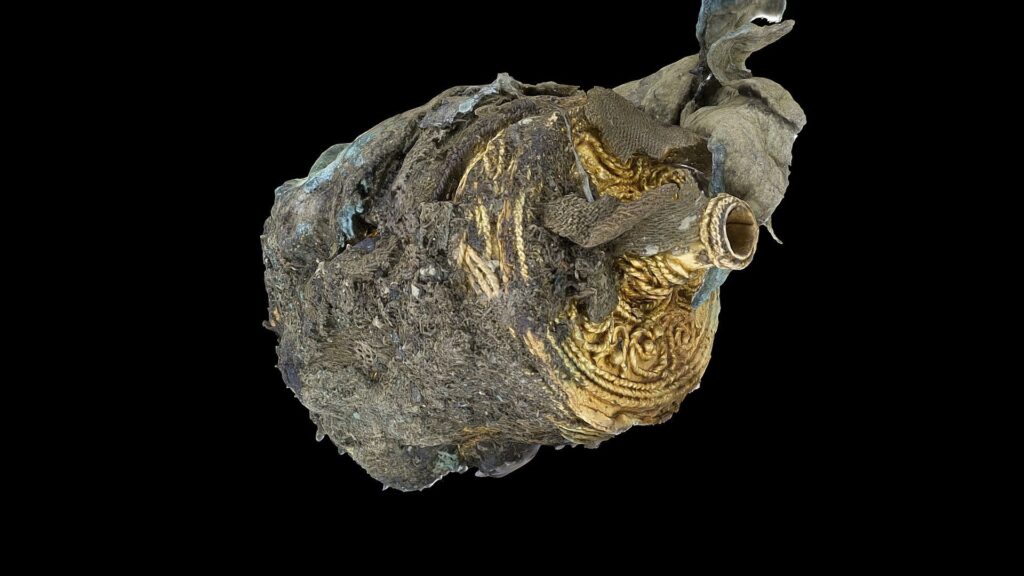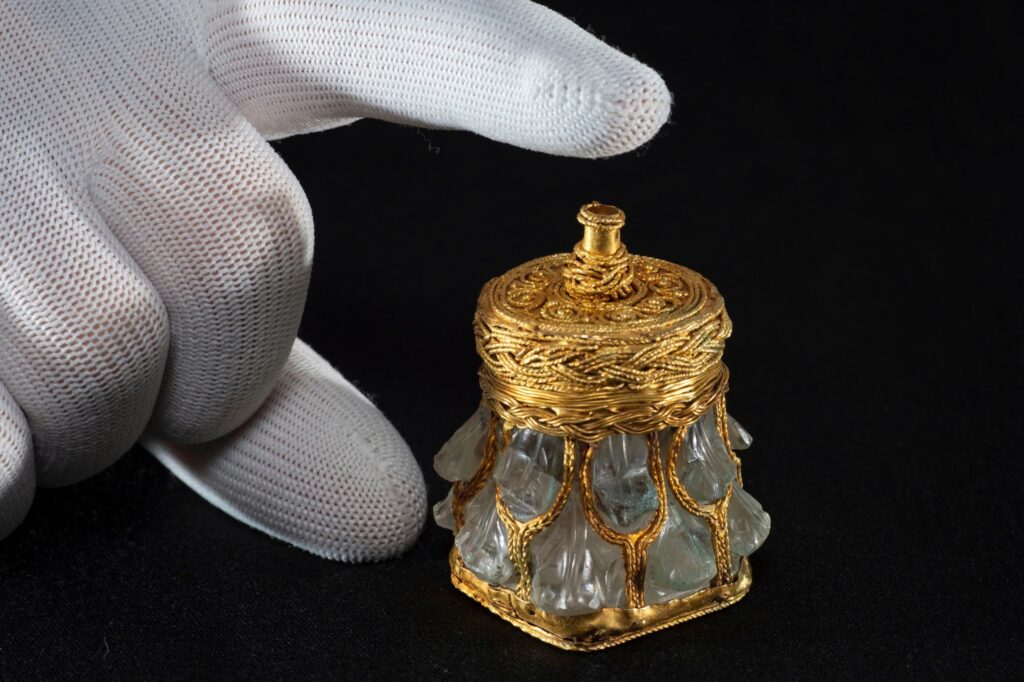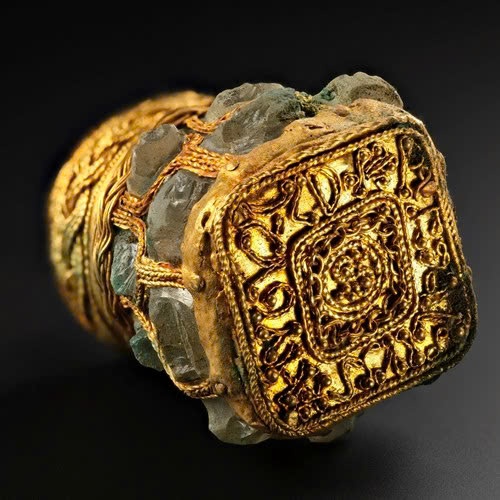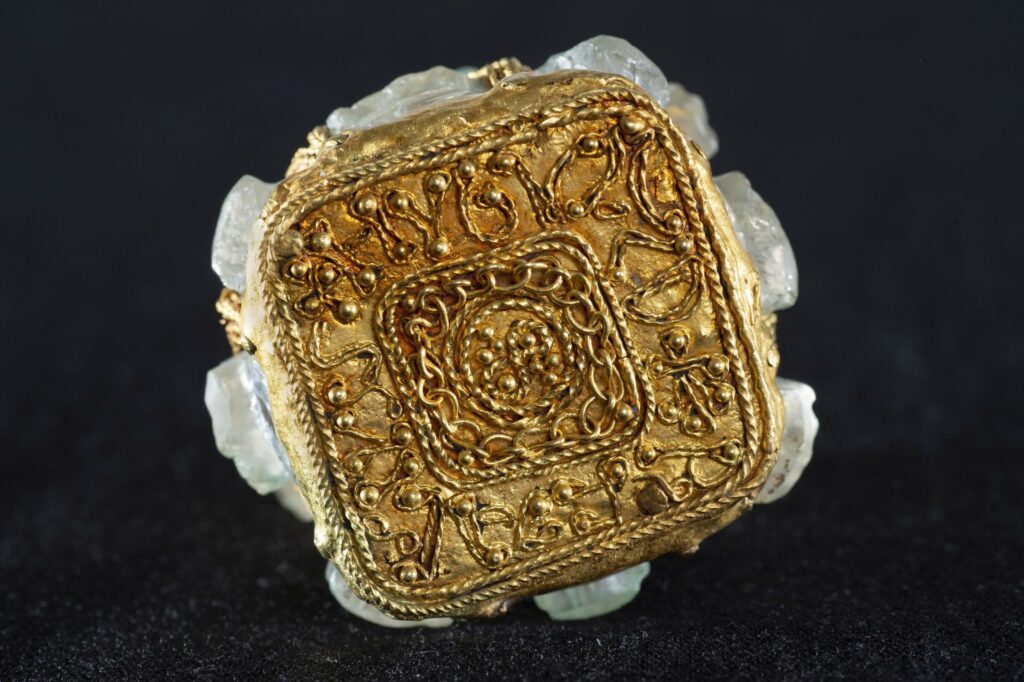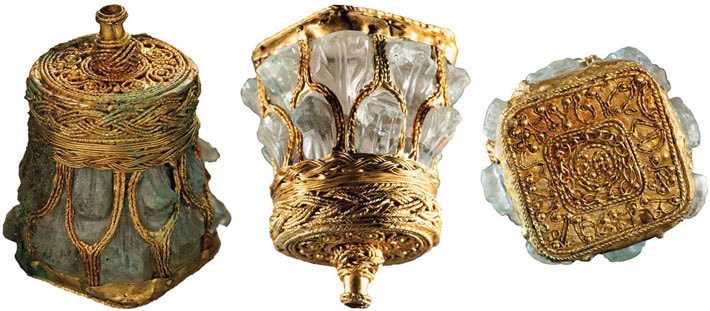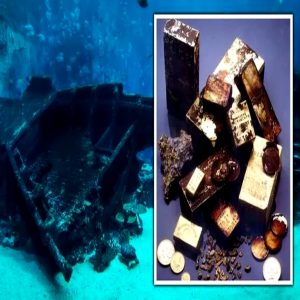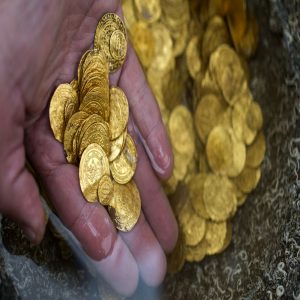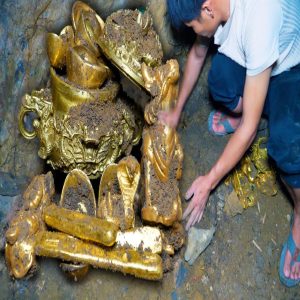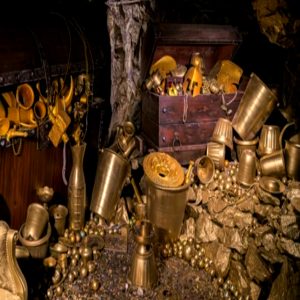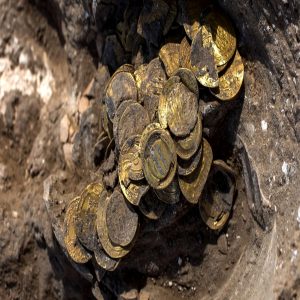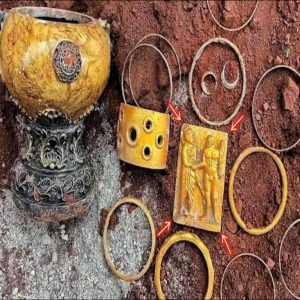In September 2014, a metal detectorist stumbled upon what would become known as the Galloway Hoard near Castle Douglas in Dumfries and Galloway, Scotland. This discovery would prove to be the richest Viking-era treasure trove ever found in Britain or Ireland, setting the stage for years of painstaking research and conservation efforts.
The National Museums Scotland’s Acquisition
A Multi-Million Dollar Investment in History
In 2017, the National Museums Scotland (NMS) acquired the Galloway Hoard for £1.98 million ($2,550,000), recognizing its immense historical and cultural value. This acquisition marked the beginning of an extensive conservation project that would reveal astonishing artifacts and rewrite our understanding of Viking-era trade and craftsmanship.
Treasures Beyond Imagination
A Diverse Array of Rare Objects
As conservators carefully cleaned and examined the hoard, they uncovered an impressive array of high-status Viking objects. Among the treasures were a silver pectoral cross adorned with niello enamel, a unique gold bird-shaped pin, and a silver-gilt pot that would prove to hold even more surprises within.
The Enigmatic Silver-Gilt Pot
Initially believed to be of Carolingian origin, the silver-gilt pot turned out to be a Sasanian vessel from Persia. This revelation came through 3D modeling and X-ray imaging, which unveiled intricate iconography featuring leopards, tigers, and Zoroastrian symbols. Radiocarbon dating of the textiles wrapped around the pot placed its creation between 680 and 780 A.D., making it a centuries-old artifact by the time it was buried with the hoard.
The Star of the Show: A Roman Crystal Jar
From Column Capital to Treasured Vessel
Perhaps the most intriguing object within the silver-gilt pot was a carved rock crystal jar. Initially encased in a silk-lined leather pouch, this artifact held secrets that would astound researchers. 3D X-ray imaging revealed a Latin inscription on its base: “Bishop Hyguald had me made.”
A Journey Through Centuries
Further examination showed that the jar began its life as the capital of a Corinthian column, crafted from rock crystal during the late Roman Empire. Over the next 500 years, this architectural element was transformed into an exquisite jar, wrapped in delicate gold thread – a testament to the ingenuity and craftsmanship of ancient artisans.
Unlocking Ancient Secrets
The Potential for Further Discoveries
Dr. Martin Goldberg, NMS’s principal curator of early medieval and Viking collections, speculates that the jar may still contain trace elements of its original contents. Modern scientific analysis could potentially reveal the exact chemicals used, offering insights into the exotic liquids – perhaps perfumes from the Orient or anointing oils used in royal or ecclesiastical ceremonies – that once filled this precious vessel.
The Ongoing Legacy of the Galloway Hoard
As the conservation project at the National Museums Scotland continues, each artifact from the Galloway Hoard provides a unique window into the past. The Roman crystal jar, with its intricate gold threading and mysterious history, stands as a symbol of the rich cultural exchanges and craftsmanship of the Viking era. With each new discovery, our understanding of this incredible period in history deepens, promising more revelations to come.
